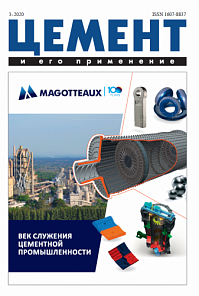Cement production would be impossible without refractories. However, the potential for saving costs through the selection of refractory material and design aligned to each kiln system is often underestimated. Optimal refractory solutions can extend operating times and p...
The paper describes the products of the WELL Technology (WT) plant placed in Estonia. The plant is a part of AIRTIME company providing technical support, commissioning, warranty and post-warranty service in Russia. The plant is a licensee of Chicago Blower Corp...
General recommendations by Timken, USA, on the selection and installation of lip seals for shaft bearings in process equipment operating in harsh and corrosive environments. Design specifics and general advantages of lip seals available on the market, various requiremen...
The article describes the construction of an extended conveyor belt by Bedeschi (Italy) required to feed raw materials from the quarry to the new cement plant of LafargeHolcim holding in Morocco. The 4.8 km long conveyor line partly runs through mountainous and ...
AO Spasskcement, which is part of the Vostokcement holding, is equipped with two identical technological lines with kilns of ∅ 7.0/6.4 × 95 m with a two-string four-stage suspension preheater. The kilns productivity was 138-140 t/h. One of the kilns was modernized based...
The purpose of the study is to research the impact of dolomite and dolomite limestone deposits from the North-West of Russia in the cement slurry in alkaline media, introduced as a component with appropriate dispersion into the filler and aggregate. The X-ray diffractio...
The paper studies the influence of chemical industry wastes on mineral composition during cement raw mixes firing which contain alumosilicate components obtained from flotation tailings of mining and processing plants. In this case the study relied on physical and chemi...
In H1 2020 4,043.7 kt of cement and 3,160.4 kt of clinker were produced by enterprizes — members of Ukrcement Association, which is 1.6 % more and 0.7 % less than in H1 2019, respectively.
In H1 2020 the country exported 25.5 kt of clinker worth about US$ 1,125...





